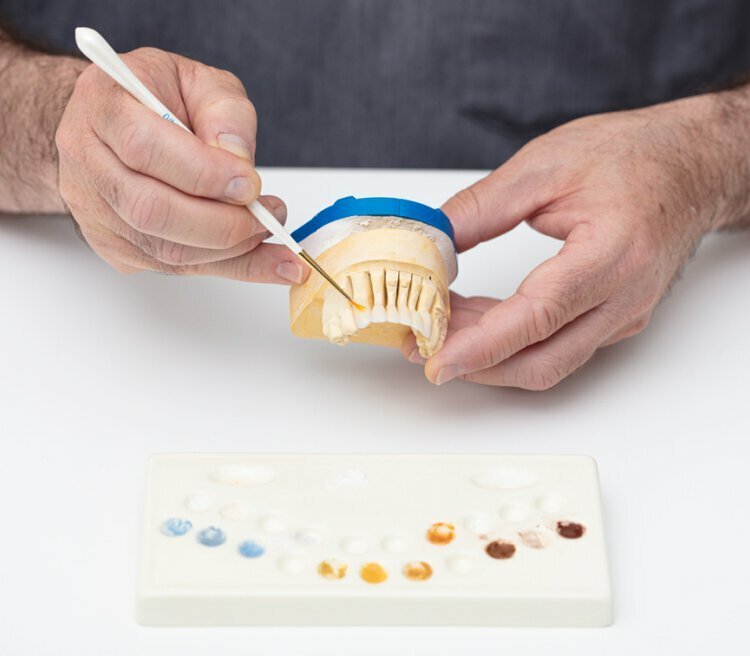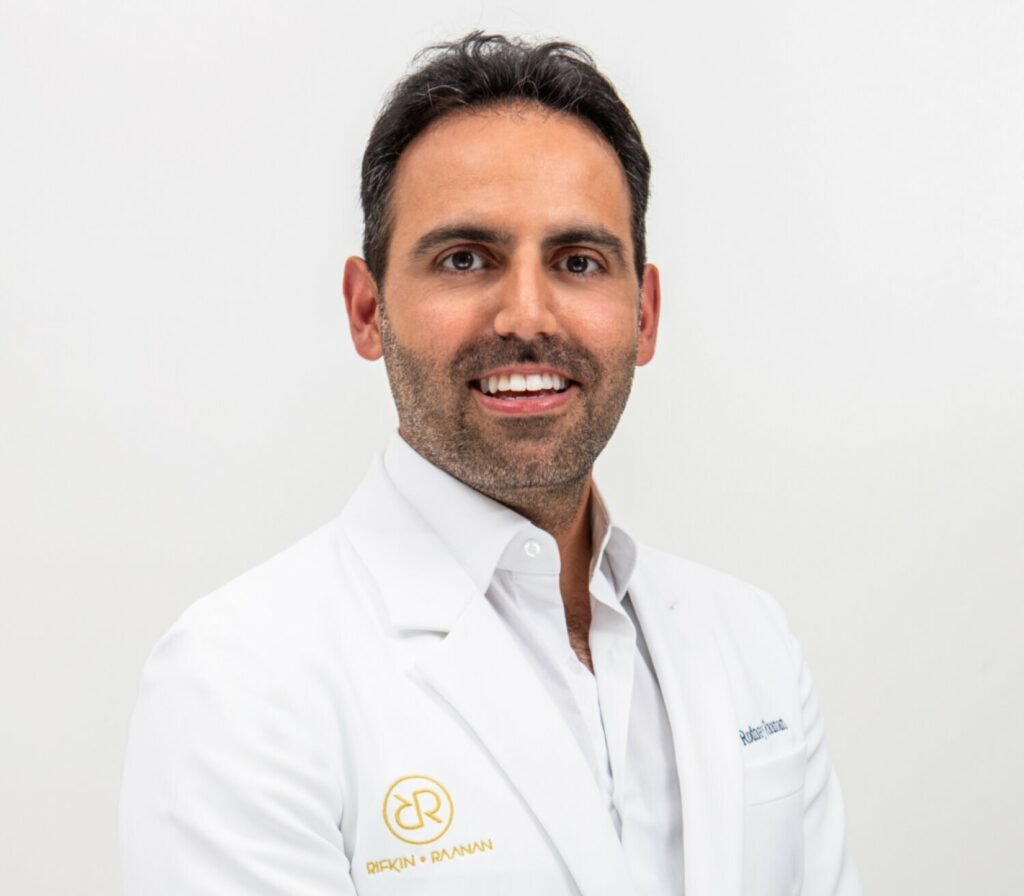Dental inlays and Onlays
Beverly Hills, CA
Inlays and Onlays:
Advanced Restorations for Stronger, Healthier Teeth
At Dr. Rodney Raanan’s practice in Beverly Hills, we are dedicated to providing the most advanced and conservative dental solutions to restore the health and beauty of your smile. When a tooth has decay or damage that is too extensive for a simple filling but not severe enough to warrant a full dental crown, dental inlays and onlays offer an ideal, long-lasting, and aesthetic restorative option.
As a highly respected Prosthodontist, Dr. Raanan possesses specialized expertise in complex dental restorations. He meticulously assesses each case to determine the most appropriate treatment, ensuring that dental inlays and onlays are precisely crafted and flawlessly fitted to preserve maximum healthy tooth structure while restoring optimal function and appearance.
What Are Dental Inlays and Onlays?
Dental inlays and onlays are custom-made dental restorations used to repair teeth that have mild to moderate decay, or teeth that are fractured or cracked but do not require a full crown. They are typically made from durable materials like porcelain, composite resin, or sometimes gold, with porcelain being the most popular choice for its aesthetic qualities.
- Inlays: An inlay fits within the cusps (the bumps on the chewing surface) of your tooth, similar to a traditional filling, but it is fabricated as a single, solid piece outside the mouth before being bonded into place.
- Onlays: An onlay is more extensive than an inlay, covering one or more of the tooth’s cusps. It’s often referred to as a “partial crown” because it covers a larger surface area than an inlay but less than a full crown.
Both inlays and onlays are considered indirect restorations, meaning they are created in a dental laboratory after an impression of your tooth is taken, ensuring a precise and durable fit.
FEEDBACK FROM OUR PATIENTS
Read The Reviews
The Benefits of Choosing dental Inlays and Onlays
Opting for inlays and onlays with Dr. Raanan provides several significant advantages:
- Preservation of Healthy Tooth Structure: Unlike full crowns, which require significant removal of healthy tooth enamel, inlays and onlays allow for the preservation of more natural tooth structure, making them a more conservative treatment option.
- Superior Durability and Strength: Custom-fabricated in a lab, inlays and onlays are significantly stronger and more durable than traditional composite fillings, especially for larger cavities. They help to strengthen the compromised tooth, rather than simply filling a hole.
- Exceptional Aesthetics: When made from porcelain or composite resin, inlays and onlays can be perfectly color-matched to your natural teeth, resulting in a virtually invisible restoration that enhances your smile.
- Precise Fit: Because they are custom-made from impressions, inlays and onlays offer a highly precise fit, which helps to prevent future decay by sealing out bacteria more effectively than some direct fillings.
- Long-Lasting Results: With proper care, inlays and onlays can last for many years, often exceeding the lifespan of traditional fillings.
- Biocompatibility: Porcelain and composite materials are highly biocompatible, meaning they are well-tolerated by the body and do not cause adverse reactions.
The Inlay and Onlay Procedure
with Dr. Rodney Raanan
Receiving your custom inlay or onlay at our Beverly Hills practice typically involves two appointments, ensuring meticulous care and an optimal outcome:
First Visit: Preparation and Impression
- Diagnosis and Numbing: Dr. Raanan will thoroughly examine your tooth to confirm that an inlay or onlay is the most suitable restoration. To ensure your comfort, the area around the tooth will be gently numbed.
- Decay Removal: Any decayed or damaged portions of the tooth will be carefully removed, much like preparing for a traditional filling.
- Tooth Preparation: The tooth is then precisely prepared to create the ideal shape for the inlay or onlay to fit perfectly.
- Impressions: Accurate impressions (molds) of your prepared tooth and the surrounding teeth are taken. These impressions are then sent to a state-of-the-art dental laboratory, where your custom inlay or onlay will be meticulously crafted.
- Temporary Restoration: A temporary filling or restoration will be placed on your tooth to protect it while your permanent inlay or onlay is being fabricated.
Second Visit: Bonding the Permanent Restoration
- Temporary Removal and Cleaning: Once your custom inlay or onlay arrives from the lab, you’ll return for your second appointment. The temporary restoration will be removed, and the tooth will be thoroughly cleaned.
- Fit and Shade Verification: Dr. Raanan will carefully try in the new inlay or onlay to ensure a perfect fit, proper bite alignment, and an exact color match with your natural teeth.
- Permanent Bonding: Once Dr. Raanan is satisfied with every detail, the inlay or onlay will be securely bonded to your tooth using a strong dental adhesive.
- Polishing: The restoration will then be polished to a smooth finish, ensuring comfort and aesthetic integration with your smile.
Dr. Raanan’s expertise in advanced restorative techniques ensures that your inlay or onlay will not only repair your tooth but also enhance its long-term health and your smile’s beauty. Contact us today to learn if inlays or onlays are the right solution for you.
Schedule an appointment for the best Porcelain veneers in Beverly Hills
Come in for a consultation and find out all about the best cosmetic dentist in Beverly Hills. Let Dr. Raanan help you Own Your Smile™
By submitting this, you agree to be contacted by us. For more information, [lease read our privacy policy
Dental inlays and Onlays
in
Beverly Hills, CA
Frequently Asked Questions
Inlays and onlays are custom-made dental restorations used to repair teeth that have moderate decay or damage that is too extensive for a traditional filling but not severe enough to require a full dental crown. An inlay fits within the cusps (the bumps on the chewing surface) of a tooth, while an onlay extends over and covers one or more of the cusps, making it a “partial crown.”
Traditional fillings (like composite or amalgam) are typically placed directly into the tooth in one visit and are best for smaller cavities. Inlays and onlays, on the other hand, are indirect restorations. This means they are custom-fabricated in a dental laboratory after an impression of your tooth is taken, and then bonded into place in a second visit. This process allows for greater strength, precision, and durability, especially for larger areas of decay or damage.
The main difference lies in the amount of tooth structure they cover. A dental crown completely encases the entire visible portion of a tooth above the gum line. Inlays and onlays are more conservative, as they only cover the damaged portion of the tooth, preserving more of your natural tooth structure. They are often a great option when a tooth is still structurally sound enough not to need a full crown.
Inlays and onlays are most commonly made from high-quality porcelain or composite resin. Porcelain is often chosen for its excellent aesthetics and durability, as it can be precisely matched to your natural tooth color. In some cases, gold can also be used.
With proper oral hygiene and regular dental check-ups, inlays and onlays are very durable and can last for many years, often between 10 to 30 years. Their longevity often exceeds that of traditional fillings due to their custom fabrication and stronger bonding to the tooth.
Your comfort is a top priority at Dr. Raanan’s office. The procedure involves local anesthesia to numb the tooth and surrounding area, so you should not feel any pain during the treatment. You might experience some mild sensitivity or soreness after the anesthesia wears off, but this is typically temporary and manageable.
Caring for your inlay or onlay is just like caring for your natural teeth. Maintain excellent oral hygiene by brushing twice a day, flossing daily, and attending your routine dental check-ups and cleanings with Dr. Raanan. While the restoration itself won’t decay, the underlying tooth structure and surrounding gum tissue are still susceptible to cavities and gum disease.
Yes, absolutely! When made from porcelain or composite resin, inlays and onlays are custom-matched to the natural shade of your tooth. This allows them to blend seamlessly, making the restoration virtually undetectable and significantly enhancing the aesthetics of your smile by restoring the tooth’s natural shape and color.







